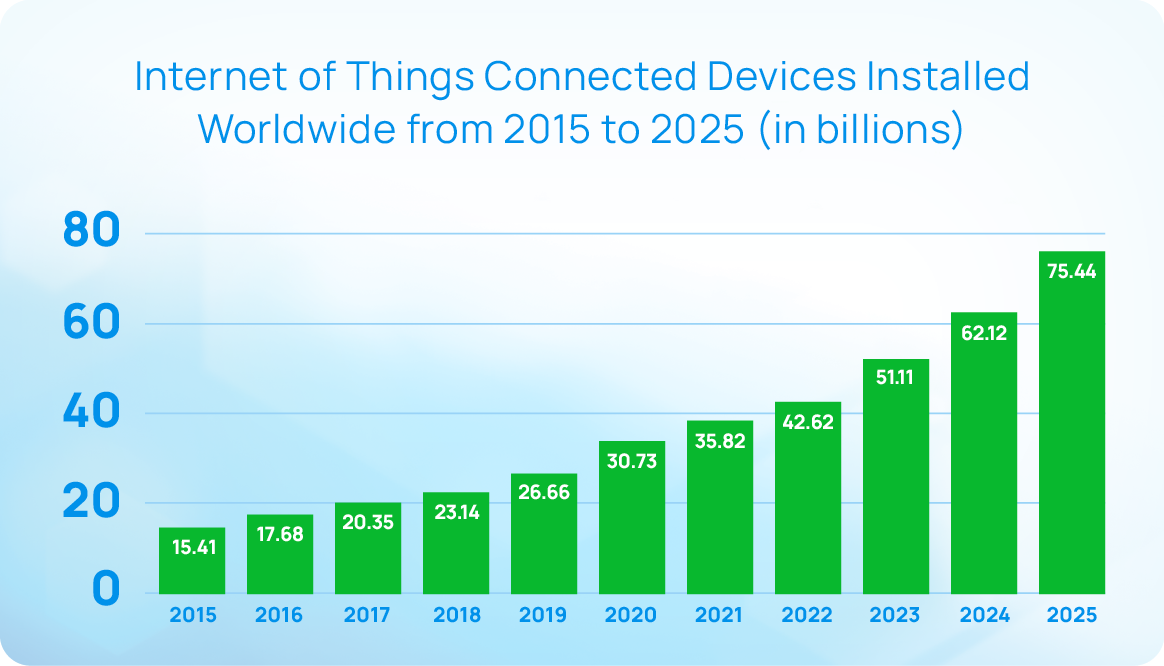[ad_1]
Without knowing your business or your target audience, we feel confident that a refrigerator is not your ideal buyer. Yet last year, an ad fraud scheme routed ads that were intended to reach connected TV viewers to other connected devices, such as smart refrigerators.
The Internet of Things (IoT) that connects all our devices and allows them to “talk” to each other lets us know when we’re running low on milk, what new streaming content we want to watch, and sets the thermostat so the temperature in our home is just right. It also provides another opportunity for bad guys to virtually break-in, putting personal information and ad budgets at risk with IoT fraud opportunities.
To protect ourselves, do we just need to unplug? To protect marketing budgets, should advertisers avoid CTV ads and risk missing out on one of the fastest-growing channels? Fraudsters will always exploit any opportunity to further their cause, but there are steps we can take as consumers that allow us to safely enjoy the convenience of connection. Marketers can also set themselves up to ensure they are connecting to consumers, not fraudsters.
IoT Security Begins at Home
According to Deloitte’s 2022 Connectivity and Mobile Trends report, the average household has 14 kinds of devices, with 22 total connected devices. These may include smart appliances like a refrigerator or TV, smart thermostats, security cameras, virtual assistants, smartphones, and wearables—and don’t forget about the connected car parked in the garage.

With so many devices you use daily, and many of those being devices you rely on to protect your home, it’s important to remember they can be hacked, putting your personal information at risk. Here are some things consumers can do to protect themselves and their personally identifiable information (PII):
Change the password. Many of these devices come with a pre-set default password, and it’s not hard for hackers to figure out what that is. Change the passwords on all your devices as soon as you install them; and use a unique password for each device.
Reputation matters. That bargain, off-brand TV streaming box may end up costing you more in the long run than one from a reputable manufacturer. As a consumer, you may not care that ad fraud schemes have been linked to them, but you should care that it may include malware that can communicate with questionable foreign servers.
Stay up to date. Just like your smartphone, other connected devices need to be updated to optimize performance and compatibility and to address any security issues.
Care about data sharing. We’re all too quick to click the “I’ve read and accept the terms” box without actually reading the terms. That’s not a smart thing to do. You need to know what data your devices are collecting, how it’s stored, and with whom it’s shared. If you do just one thing, opt out of data sharing, if possible.
The Federal Communications Commission (FCC) has issued a Notice of Proposed Rulemaking (NPRM) “to improve consumer confidence and understanding of the security of their connected devices.” The intent is to help consumers to identify which devices offer more security. A final ruling has not been issued at this time; even when it is, consumers should still be prepared to protect themselves because we know fraudsters will find their way into even the most secure devices.
Using Connected Devices to Connect Brands and Buyers
Now that you’ve secured your connected home devices, let’s look at ad fraud and connected devices, particularly connected TVs (CTV). The Association of National Advertisers recently reported on what will be trending in CTV advertising in 2024:
More viewers, more spending. In 2014, half of U.S. households reported having at least one CTV device; by 2022, that number had grown to 87 percent, and it’s projected to continue to grow. As ad-free streaming subscription prices increase and consumers look for more ways to save money, some of the most popular streaming services are reporting more ad-supported subscriptions than ad-free ones.
In addition, some consumers say they are more likely to be receptive to ads on their connected devices than they are to ads on social media. These factors add up to make CTV ads popular with marketers, with just over 10 percent of digital ad budgets projected to be directed to CTV.
Targeted audience capabilities. Many marketers report precision audience targeting is one of the top benefits that CTV has over traditional TV. This allows for more relevant ads, which advertisers hope will generate more sales.
Interactive ads. Advertisers will be able to incorporate QR codes and short links in ads, which will allow viewers to buy directly from their CTVs. Shoppable ads may also be voice-activated, so you may want to think twice before you shout out, “I have to have one of those!”
Omnichannel advertising. Advertisers may be able to clearly define their ideal customers, but those customers are moving targets. They’re on social media, they watch videos on their smartphones, and they have their favorite online news sources. That’s why we can expect CTV ads to be included in omnichannel advertising campaigns, so the message can reach them wherever they are.
New Channel. Same Ad Fraud Threats.
The more households and users connected to smart devices, the more appealing it is to advertisers to reach them there. Unfortunately, fraudsters find hacking consumers and stealing ad dollars just as appealing.
While CTV is a newer and growing channel for advertisers, the ad fraud threats have a lot in common with other forms of digital advertising.
Bots can impersonate people and devices. When those bots impersonate people, advertisers pay for CTV impressions that no human saw. When bots impersonate devices, advertisers may be paying for ads that were intended to run on CTV and instead end up “displayed” on refrigerators or other smart devices that aren’t buying.
As with online display ads, fraudsters can use malware injection to remotely control thousands of susceptible devices from a central location, enabling them to commit click fraud on a massive scale. Once again, advertisers end up paying for ads that no human sees.
You can be a victim of CTV ad fraud even if you aren’t buying ads on that channel. How? Fraudsters use hijacked IoT devices to generate and drive large numbers of illegitimate traffic to websites. Once there, the programmed bots can click on your ads that don’t convert, eating away at campaign budgets and generating revenue for the fraudsters.
Fraudsters are always going to exploit any weakness and one of the biggest weaknesses with CTV, as with most all digital advertising, is in the open programmatic exchange. We know that as much as 50 percent of programmatic ad spend is lost to fraud, and we expect to see similar numbers with CTV ads placed programmatically.
While there’s no catch-all solution for advertisers to prevent CTV ad fraud, just as with consumers there are some precautionary steps you can take to guard your ad campaigns. The trick is to examine traffic data and put appropriate filters in place.
An ad fraud solution can filter your traffic and add an extra layer of protection. By reviewing your traffic data, your ad fraud partner can help identify visitors coming from areas outside your target location, or from outdated devices. You can use this information to fine-tune campaign parameters to drive more relevant traffic while putting in place a plan to detect and block bots from your site.
We’re all connected these days. As consumers, we’ve gotten used to the convenience our connected devices offer, and many of us can’t quit our favorite streaming shows. Advertisers want to connect with consumers where they are, and the IoT provides the opportunity for them to do so. Despite all the risks involved with IoT, consumers and advertisers aren’t likely to unplug, and neither are fraudsters.
No advertising channel is immune to ad fraud, but with a little effort and the right solution in place, marketers can prevent ad fraud, connect to real prospects, improve their marketing budget, and better leverage their ad dollars.
Connect with Anura for a free 15-day fully functional trial and find out how we can detect and stop fraudulent traffic on your digital ads, on any channel.

[ad_2]
Source link







